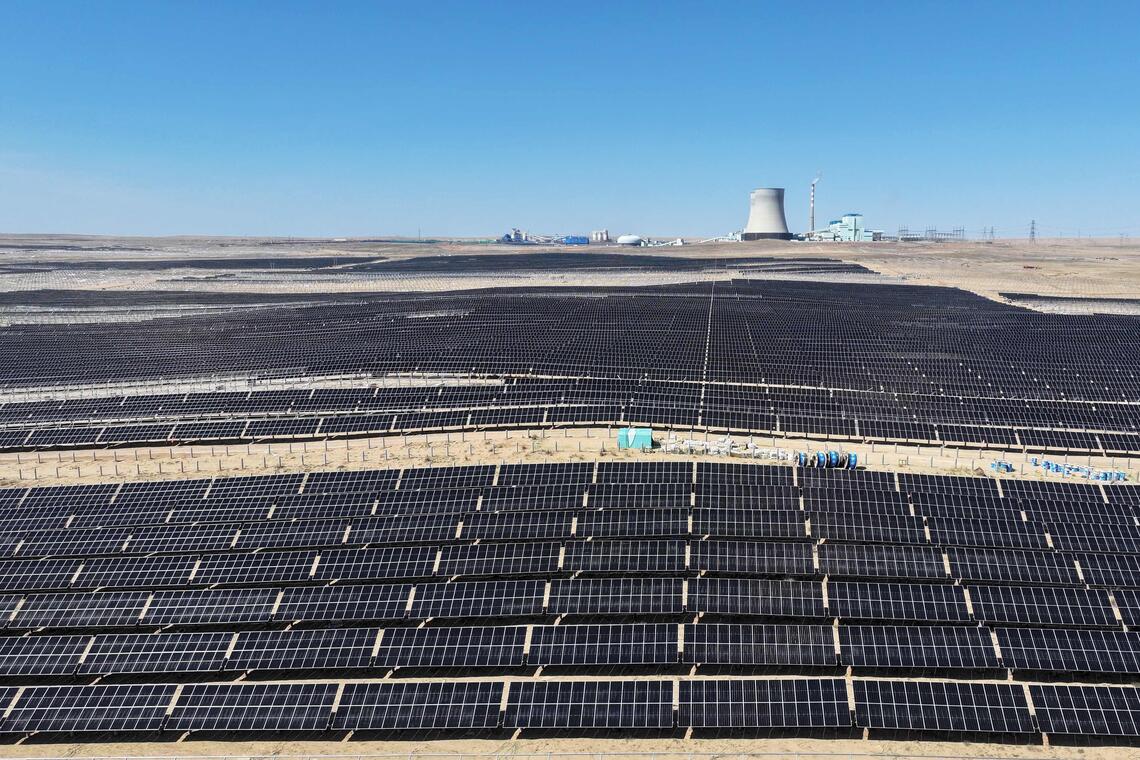Articles in this Cluster
07-10-2025
Renewable energy has overtaken coal as the world's leading source of electricity for the first time, according to a report by the global energy think tank Ember. The growth in solar and wind energy was strong enough to meet 100% of the extra electricity demand, and even helped drive a slight decline in coal and gas use. However, the report notes that this global trend masks regional differences, with developing countries like China and India leading the clean energy charge, while richer nations like the US and EU relied more on fossil fuels. China's dominance in clean energy growth is particularly notable, with the country adding more solar and wind capacity than the rest of the world combined. The report calls this moment a 'crucial turning point' in the shift towards clean power.
Entities: Ember, China, US, EU, India • Tone: neutral • Sentiment: positive • Intent: inform
07-10-2025
The World Bank has raised its 2025 growth forecast for China to 4.8% despite ongoing U.S.-China trade tensions. The forecast was previously set at 4% in April. The bank attributes the upgrade to China's government support measures, including stimulus packages and targeted consumer trade-in programs, which have helped maintain retail sales and exports. However, the bank projects China's GDP growth to ease to 4.2% in 2026 due to a slowdown in exports growth and reduced stimulus. China's economy has been impacted by the real estate slump and tepid consumer spending, but exports have been supported by shipments to Southeast Asia and Europe. The World Bank also upgraded its growth forecast for the East Asia and Pacific region to 4.8% this year, driven by China's upgrade.
Entities: World Bank, China, U.S., East Asia, Pacific • Tone: neutral • Sentiment: neutral • Intent: inform
07-10-2025
For the first time in history, renewable energy has produced more of the world's electricity than coal, according to a new analysis of global energy trends. In the first half of 2025, solar and wind energy outstripped growth in global electricity demand and led to a small but significant reduction in the use of fossil fuels compared to the year before. However, experts warn that the increase will not be enough to meet rising global demand for electricity, let alone start to reduce emissions and combat global warming. The International Energy Agency (IEA) forecasts a doubling of global clean energy capacity by 2030, with solar photovoltaic technology accounting for 80% of the increase in renewable capacity over the next five years.
Entities: Renewable energy, Coal, Solar energy, Wind energy, International Energy Agency (IEA) • Tone: neutral • Sentiment: positive • Intent: inform
07-10-2025
The International Energy Agency (IEA) has reported that the growth of renewable energy is slowing down due to policy changes in the US and China, and will fall short of the goal of tripling renewable energy output by 2030. The IEA had previously forecast that the world would come close to this target with the addition of 5,500 gigawatts of renewable power, but now expects only a 4,600 gigawatt gain. The slowdown is attributed to policy changes in the US, including the early phase-out of tax credits for renewables, and China's shift from fixed tariffs to auctions for renewable energy producers. Despite this, China is still on track to meet its 2035 wind and solar power target five years ahead of schedule. The IEA noted that while growth in China and the US may be slowing, there is a more positive outlook elsewhere, with countries like India, Germany, Italy, Poland, and Spain expected to drive growth in renewable energy.
Entities: International Energy Agency, US, China, India, Donald Trump • Tone: neutral • Sentiment: negative • Intent: inform
